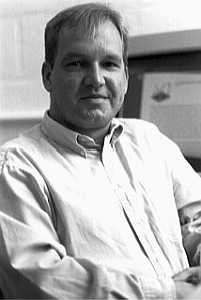Engineers at North Carolina State University in Raleigh received a grant to develop materials that fold themselves into three-dimensional objects when exposed to light. National Science Foundation awarded the four-year, $1.76 million grant to Jan Genzer (pictured right), a chemical engineering professor at NC State.
Genzer says he is assembling a team of “designers, engineers, and mathematicians to advance our understanding of how to manipulate photoresponsive materials.” Potential applications of the technology include the development of hands-free assembly of electronics in a “clean” environment, packaging and manufacturing processes, and air foils used for airdrops of humanitarian supplies.
The researchers plan to conduct experiments and run computational models to better understand the folding process. This research is expected to lead to new three-dimensional structures that can form rapidly while retaining precise control over their shape. The structures will be patterned on two-dimensional substrates, which should make them amenable to high-volume industrial techniques, such as roll-to-roll patterning used in electronics manufacturing.
In earlier work, Genzer and colleagues at NC State created a proof of concept for the process. The researchers printed bold black lines with an ordinary inkjet printer on a pre-stressed plastic sheet. The material was then cut into a desired pattern and placed under an infrared light, such as a heat lamp. The printed black lines absorbed more energy from the infrared light than the rest of the material, causing the plastic to contract. That contraction creates a hinge that folded the sheets into 3-D shapes.
Genzer’s team also devised a computer model for the process that showed the surface temperature of the hinge must exceed the point at which the material begins to soften, called the glass transition temperature. The model also showed the heat has to be localized to the hinge to have the folding happen quickly and effectively. No folding happens if the entire piece of the material is heated to the glass transition temperature.
The following video demonstrates Genzer’s earlier work, to piano accompaniment.
- Air Force Grant to Fund Research on Nanomaterials Shaping
- Nanotech Fabrication Process Developed for Smaller Chips
- Process Developed to Self-Assemble Materials into Objects
- Mass Production Process Devised for Micro Robots, Devices
- Faster Process Developed for Ultrasound Materials Testing
* * *


 RSS - Posts
RSS - Posts
You must be logged in to post a comment.